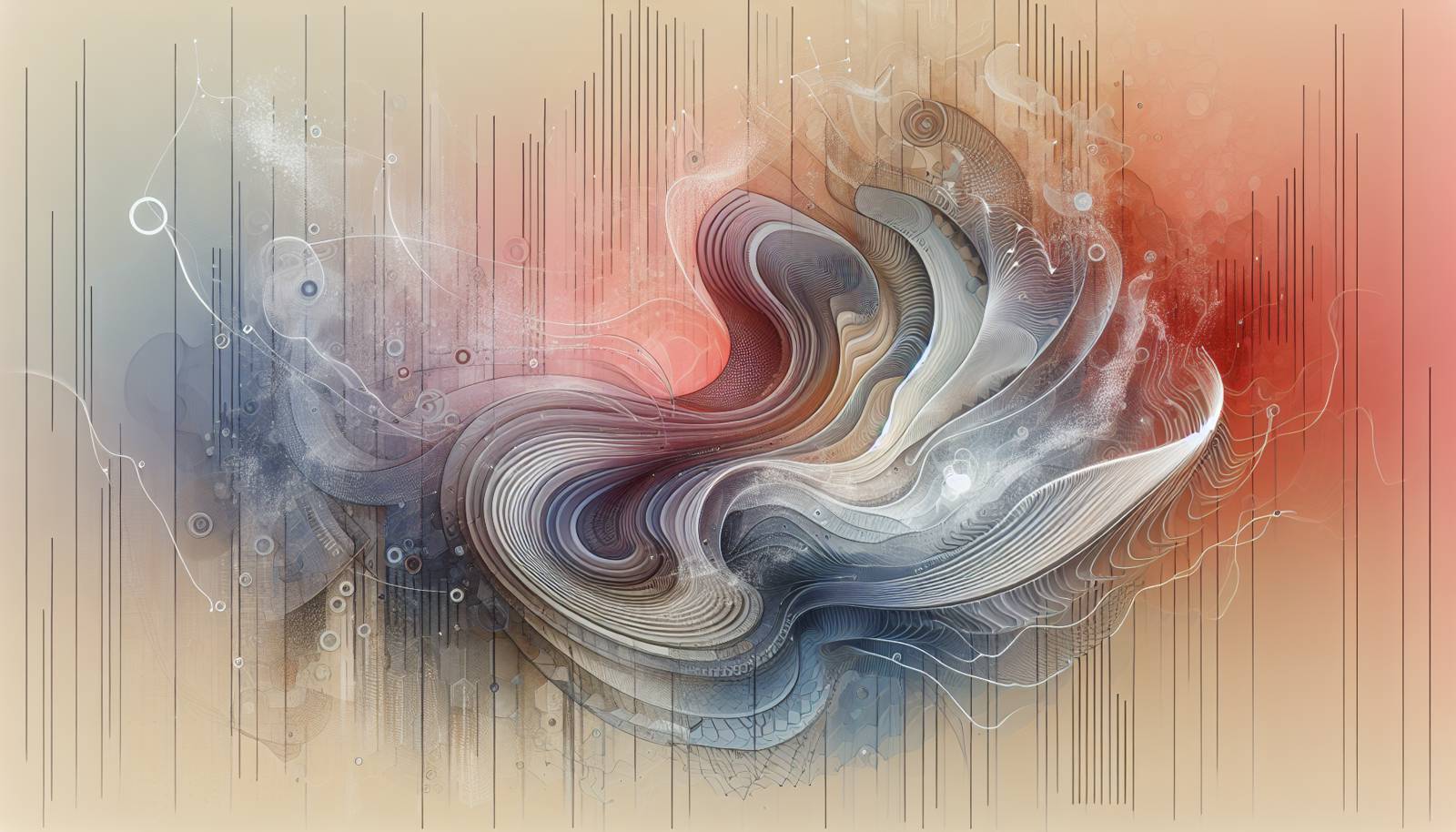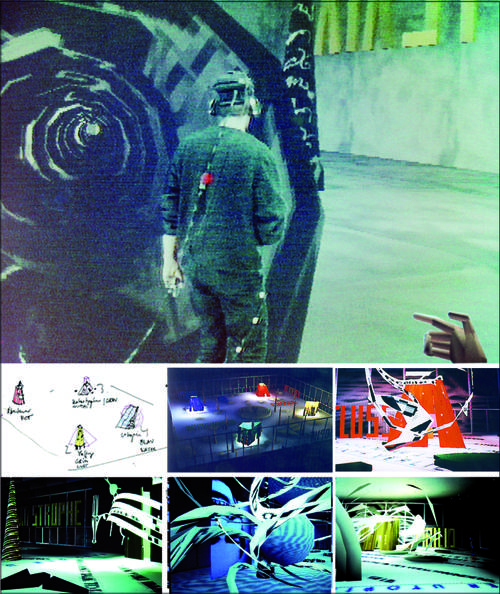
FAQ About The Influence of Virtual Reality on Art Exhibitions

What is virtual reality in the context of art exhibitions?
Virtual reality (VR) in art exhibitions refers to the use of VR technology to create immersive, interactive experiences for visitors. This can involve digital recreations of artworks, 3D environments where users can 'walk' through exhibitions, or entirely virtual displays accessible through VR headsets. By employing VR, art exhibitions can transcend the physical limitations of a gallery space, offering a more interactive and engaging experience.

How does virtual reality enhance interactivity in art exhibitions?
Virtual reality enhances interactivity in art exhibitions by allowing visitors to engage with artwork in a more immersive way. Viewers can explore 3D models, interact with digital elements, and even manipulate the artwork in ways that are not possible in traditional settings. This interactivity can deepen the understanding of the art and create personalized experiences that resonate with viewers on different levels.

Can virtual reality make art exhibitions more accessible?
Yes, virtual reality can significantly increase the accessibility of art exhibitions. It allows people from around the world to experience exhibitions without needing to travel to the physical location. This is particularly beneficial for individuals with disabilities, people in remote areas, or those who cannot afford to visit in person. Additionally, VR can offer multi-sensory experiences that cater to various audiences, including options for audio descriptions and enhanced visual effects.

What types of art exhibitions are best suited for virtual reality?
Art exhibitions that involve digital or 3D artwork, installations requiring interaction, or those that benefit from immersive storytelling are particularly well-suited for virtual reality. Contemporary art pieces that engage with themes like virtual worlds, technology, or the future can also align well with VR experiences. However, even traditional art pieces can be enhanced with VR by providing additional context or layers to the work.

Are there any notable art exhibitions that have successfully used virtual reality?
Yes, there have been several notable art exhibitions that have successfully incorporated virtual reality. The British Museum and the Louvre have leveraged VR to offer virtual tours and curated experiences. Additionally, exhibitions like the "VR Museum of Fine Art" allow users to explore famous artworks in a virtual space, experiencing pieces from different angles and perspectives.

What technology is required to experience a virtual reality art exhibition?
To experience a virtual reality art exhibition, users typically need a VR headset, which can range from high-end devices like the Oculus Rift or HTC Vive to more affordable options like Google Cardboard. Some VR exhibitions might also require specific software or apps that can be downloaded onto smartphones or computers to run the virtual experience. Stable internet connectivity is often needed for streaming content or downloading necessary files.

How has the COVID-19 pandemic affected the use of virtual reality in art exhibitions?
The COVID-19 pandemic accelerated the adoption of virtual reality in art exhibitions as institutions sought new ways to reach audiences amid physical distancing restrictions. Virtual exhibitions became a crucial tool for maintaining engagement with the public, allowing museums and galleries to offer digital experiences that kept the culture and art accessible even when physical spaces were closed.

What are the limitations of using virtual reality in art exhibitions?
While virtual reality offers numerous benefits, there are also limitations. The necessity for specific technology, such as VR headsets, can be a barrier for some users due to cost or lack of access. The immersive nature of VR can also cause discomfort or motion sickness for some individuals. Additionally, VR experiences might lack the tangible quality and emotional impact of viewing art in person, which can affect the overall experience.

How do artists create content for virtual reality art exhibitions?
Artists creating content for virtual reality art exhibitions often collaborate with technologists and software developers to translate their vision into a VR format. They may utilize 3D modeling software, virtual environment design, and interactive elements to build an immersive experience. The process involves a blend of traditional artistic skills with digital technology and often relies on iterative testing and refinement.

What is the future of virtual reality in art exhibitions?
The future of virtual reality in art exhibitions looks promising, with continued advancements in technology and increasing interest from both artists and institutions. As VR technology becomes more accessible and affordable, we can expect to see more innovative and widespread use of VR in the art world, enhancing interactivity and accessibility while creating new forms of artistic expression.

How do virtual reality art exhibitions differ from traditional exhibitions?
Virtual reality art exhibitions differ from traditional ones primarily in terms of engagement and reach. In a VR exhibition, visitors can interact with art in immersive environments without the constraints of physical space. These exhibitions can also be accessed globally, breaking geographical barriers and offering interactive, personalized experiences. However, they may miss out on the tangible aspect of experiencing art in person, which can be significant in traditional settings.

What role does storytelling play in virtual reality art exhibitions?
Storytelling is a crucial element in virtual reality art exhibitions. It helps guide the viewer through the immersive experience, providing context and narrative that can enrich the understanding of the artwork. Through VR, artists can craft multi-sensory stories that connect pieces of art to broader themes or historical contexts, offering a deeper emotional response and engagement for the audience.

Are virtual reality art exhibitions environmentally friendly?
Virtual reality art exhibitions can be considered environmentally friendly compared to traditional exhibitions. Since they reduce the need for physical travel and resources, such as shipping artwork and building displays, the carbon footprint associated with hosting and viewing exhibitions can be significantly lower. However, they do require electronic hardware and energy, which is also a factor to consider.

What opportunities does virtual reality offer for emerging artists in art exhibitions?
Virtual reality opens up new opportunities for emerging artists by providing a platform for showcasing their work to a wider audience without the need for traditional gallery spaces. It allows artists to experiment with digital mediums and interactive storytelling, potentially reaching audiences that might not have access to physical exhibitions. VR can democratize art access, allowing talent to shine regardless of geographic or economic barriers.

How can viewers prepare for a virtual reality art exhibition experience?
To prepare for a virtual reality art exhibition, viewers should ensure they have the necessary equipment, such as a compatible VR headset, and have downloaded any required software or apps. It's also helpful to have a stable internet connection for an optimal experience. Familiarizing oneself with VR basics and comfort settings can enhance the experience, ensuring viewers know how to navigate the virtual environment and interact with the content.

What platforms are commonly used for hosting virtual reality art exhibitions?
Several platforms are commonly used for hosting virtual reality art exhibitions. These include VRChat, Mozilla Hubs, AltspaceVR, and bespoke applications developed specifically for certain exhibitions. These platforms provide the necessary infrastructure to create immersive virtual environments that can be accessed by various VR headsets, offering tools for interaction and community engagement.

Can virtual reality impact the traditional art market?
Virtual reality has the potential to impact the traditional art market by broadening access and enabling new forms of engagement with art. As VR exhibitions become more popular, they could influence how art is bought, sold, and valued, potentially creating new market dynamics. However, the tangible experience of traditional art still holds unique value, meaning VR is more likely to complement rather than replace conventional art market practices.

Is it possible to combine virtual reality with augmented reality in art exhibitions?
Yes, it is possible to combine virtual reality (VR) with augmented reality (AR) in art exhibitions to create a mixed reality experience. This combination can offer an even richer experience by overlaying digital information or interactive elements on real-world settings, providing a bridge between the virtual and physical art worlds. Artists and curators can use both technologies to enhance storytelling, engagement, and interaction with the audience.

What are the educational benefits of virtual reality art exhibitions?
Virtual reality art exhibitions offer numerous educational benefits, including providing access to art from different cultures and historical periods without geographical limitations. VR can create interactive and engaging learning environments, making complex art concepts more relatable and understandable. These exhibitions can enhance art education by offering immersive, experiential learning opportunities that traditional classrooms may not provide.

How do virtual reality art exhibitions address technological inclusivity?
To address technological inclusivity, virtual reality art exhibitions often attempt to offer experiences across a range of devices, ensuring that they can reach as broad an audience as possible. This includes developing applications that are compatible with different VR headsets and offering alternative ways to access the content, such as through smartphones or desktop computers. However, the digital divide still presents challenges, and ongoing efforts are needed to enhance access for all users.
